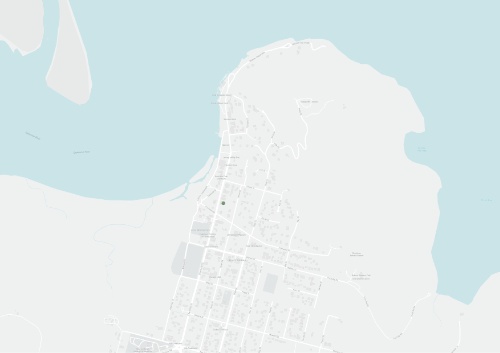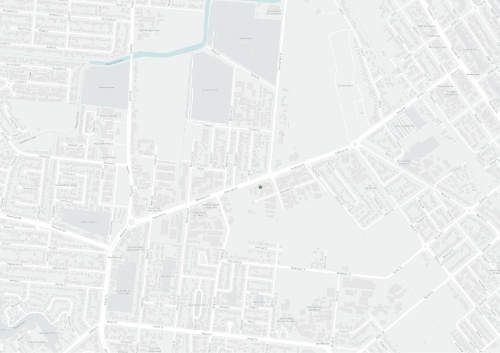Plan Explorer
Filter by:
Region
Topic
Sector
Other
Results
Cape York Peninsula Regional Biosecurity Strategy
Current StrategicCape York Natural Resource Management (Cape York NRM), Cook Shire Council (CSC), Weipa Town Authority, Wujal Wujal, Hopevale, Lockhart, Mapoon, Napranum, Aurukun, Pormpuraaw and Kowanyama Aboriginal Shire Councils and the Northern Peninsula Area Regional Council (NPARC) have collaboratively devel
Laura Rangers weed and fire plan
Current CommunityThis poster outlines the objectives, location, strategy, planned outcomes, and implementation of the Laura Ranger's Weed Management Strategy.
Brumby Hollow Property Pest Management Plan
Obsolete OperationalThis plan outlines the sustainable land management practices for Brumby Hollow over 4 years. Objectives are:
Bunata Property Pest Management Plan
Obsolete OperationalThis plan aims to protect the economy and environment of Bunata from the adverse impacts of weeds and feral animals.The objectives for weed and feral animal management in Bunata over the next 4 years are:
Butchers Hill Station Pest Management Plan
Obsolete OperationalTo manage the land of Butchers Hill Station, in a sustainable way, by controlling weeds and pest animals on the property, and ensuring it’s economic and environmental viability continues into the future.
Threats to priority species of the Cape York Peninsula region
Current Government PolicyOn day one of the regional workshop, participants used their knowledge of individual species to identify the major and minor regional threats that are affecting each species. On day two of the regional workshop, species were grouped by major threats.
Queensland Pest Animal Strategies - Feral Pigs (Sus scrofa)
Obsolete Government PolicyThe overall vision of the feral pig management strategy is to use best practice
management to minimise the impact of feral pigs on the environment, economy and
health of Queensland.
The strategy is intended to achieve five outcomes:
Cape York Peninsula Pest Management Strategy
Obsolete StrategicThe Cape York Peninsula Pest Management Strategy (CYPPMS) is a broad over-arching document that establishes a Cape-wide planning framework for integrated pest management by government, community, industry and individuals.
Jim's Joint Property Pest Management Plan
Obsolete OperationalThe plan has been prepared to protect the economy and environment of “Jim’s Joint” from the adverse impacts of weeds and feral animals.
Julery Pastoral Property Pest Management Plan
Obsolete OperationalThe plan represents a workable pest management program which identifies, combats and eradicates declared environmental pest plants and feral animals for Julery Pastoral.
Maitland Downs Property Pest Management Plan
Current OperationalThis plan provides a sustainable land management program for Maitland Downs, to control weeds and pest animals on the property, to ensure it’s economic and environmental viability continues into the future.
Cape York Peninsula Pest Management Plan 2006 - 2011
Obsolete StrategicThe Cape York Peninsula Pest Management Plan (CYPPMP) establishes a Cape-wide planning framework for integrated pest management by Government, Community, Industry and Individuals.
Eastern Kuku Yalanji Indigenous Protected Area Management Plan Stage 2
Current CommunityJalunji-Warra Land and Sea Country
(excerpt)
Recently added
Napranum Community Plan
Current CommunityThe Napranum Shire Council released a community plan in 2012 looking at future development for (then) the next 10 years.
Aust-Pac Capital Pty Ltd - initial advice statement
OperationalUtah Development Company (UDC), BHP Australia and Bathurst Coal and Power Limited (BPCL) conducted extensive geotechnical investigations across the resource (then known as EPC 463) in the 1970s, 1980s and the 1990s.
South of the Embley communities, heritage and environment management plan
Current OperationalThis community, heritage, and environment management plan was developed by the South of Embley working project group for the area of Rio Tinto Alcan's mining lease between Aurukun and Weipa in mid 2011.
Western Cape Communities Trust investment strategy 2011-2022
This investment strategy released in 2011 presents an in-depth explanation of the funding allocation for the Western Cape Communities Trust, established by the Western Cape Communities Co-existence Agreement for a number of purposes such as natural resource management and funding allocation.
Northern Peninsula Area Council 2010-2020 Land and Environment Management Plan introduction
Current StrategicThis document is the introductory pages for the Northern Peninsula Area Council's 2010-2020 Land and Environment Management Plan released in December 2010.
Pormpuraaw Aboriginal Lands and Waters fire management plan
Current StrategicThe Pormpuraaw fire management plan was created by the Pormpuraaw Land and Sea Management group on behalf of the Thaayorre and Mungkan Traditional Owners and the Pormpuraaw Aboriginal Shire Council in conjunction with Cape York Sustainable Futures and Firescape Science, to provide various strateg
Mapoon Aboriginal shire council community plan 2010-2020
Current CommunityThis community plan outlines how the community and council believe that the Mapoon area should develop between the 2010 and 2020 period and sets out how the issues affecting the Mapoon region at the time should've been addressed and a vision for the future Mapoon.
Western Cape Chamber of Commerce strategic plan 2010-2012
Obsolete CommunityThis strategic plan was developed following a review of the 2007 Western Chamber of Commerce Strategic Plan during a workshop in Weipa on the 20th of November 2009.
Reef Water Quality Protection Plan 2009
Superceded StrategicThe intention of the Reef Water Quality Protection Plan 2009 was to ensure that the water quality of the Great Barrier Reef Lagoon was improved by addressing non-point source pollution caused by large-scale land use along the eastern coastline.
Western Cape Communities Trust & Western Cape Communities Coordinating Committee strategic plan 2009-2012
Obsolete StrategicThis document was released by the Western Cape Communities Trust (WCCT) and Western Cape Communities Coordinating Committee (WCCCC) as a plan to deliver on 4 key objectives within the mining lease area surrounding Weipa.

